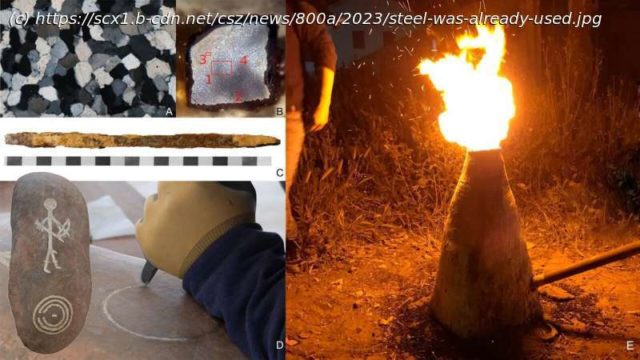A study by an international and interdisciplinary team headed by University of Freiburg archaeologist Dr. Ralph Araque Gonzalez from the Faculty of Humanities has proven that steel tools were already in use in Europe around 2,900 years ago.
A study by an international and interdisciplinary team headed by University of Freiburg archaeologist Dr. Ralph Araque Gonzalez from the Faculty of Humanities has proven that steel tools were already in use in Europe around 2,900 years ago.
Using geochemicalanalyses, the researchers were able to prove that stone stelae on the Iberian peninsula that date back to the Final Bronze Age feature complex engravings that could only have been done using tempered steel. This was backed up by metallographic analyses of an iron chisel from the same period and region (Rocha do Vigio, Portugal, ca. 900 BCE) that showed the necessary carbon content to be proper steel. The result was also confirmed experimentally by undertaking trials with chisels made of various materials: Only the chisel made of tempered steel was suitably capable of engraving the stone.
Until recently it was assumed that it had not been possible to produce suitable quality steel in the Early Iron Age and certainly not in the Final Bronze Age, and that it only came to be widespread in Europe under the Roman Empire.






